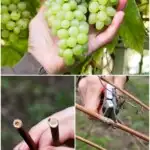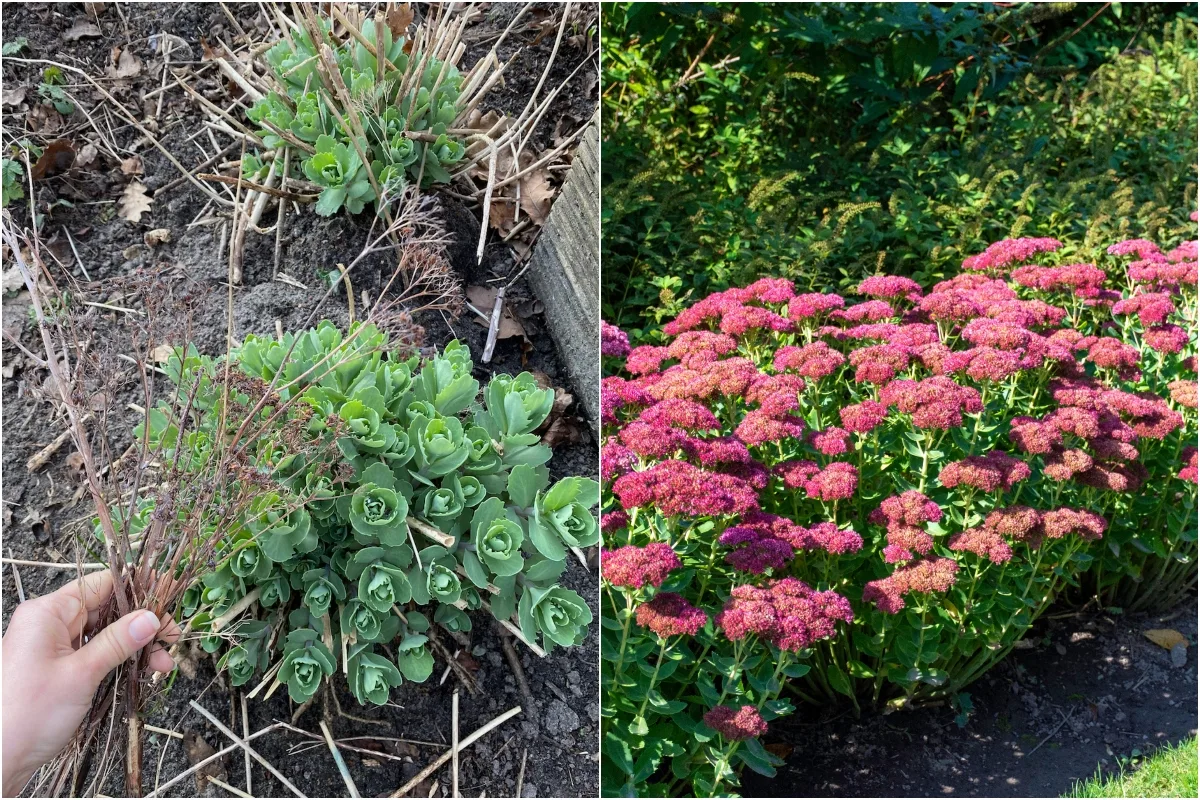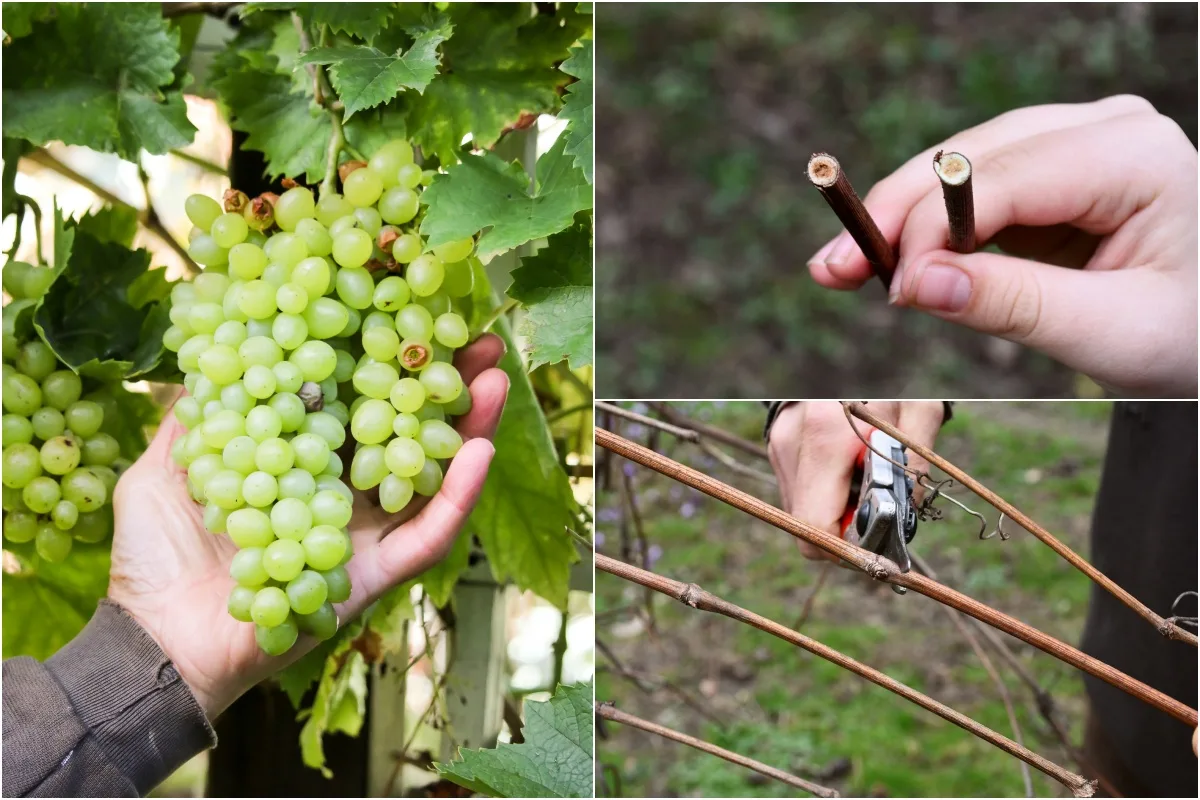
Let me guess, you heard it through the grapevine that spring is a good time to prune your grapevines?
I guess they are sending out the same message to us all, to clip, snip and give those overgrown woody branches of theirs a nice haircut before warmer weather hits.
And it turns out they are spot on; of course, they are.
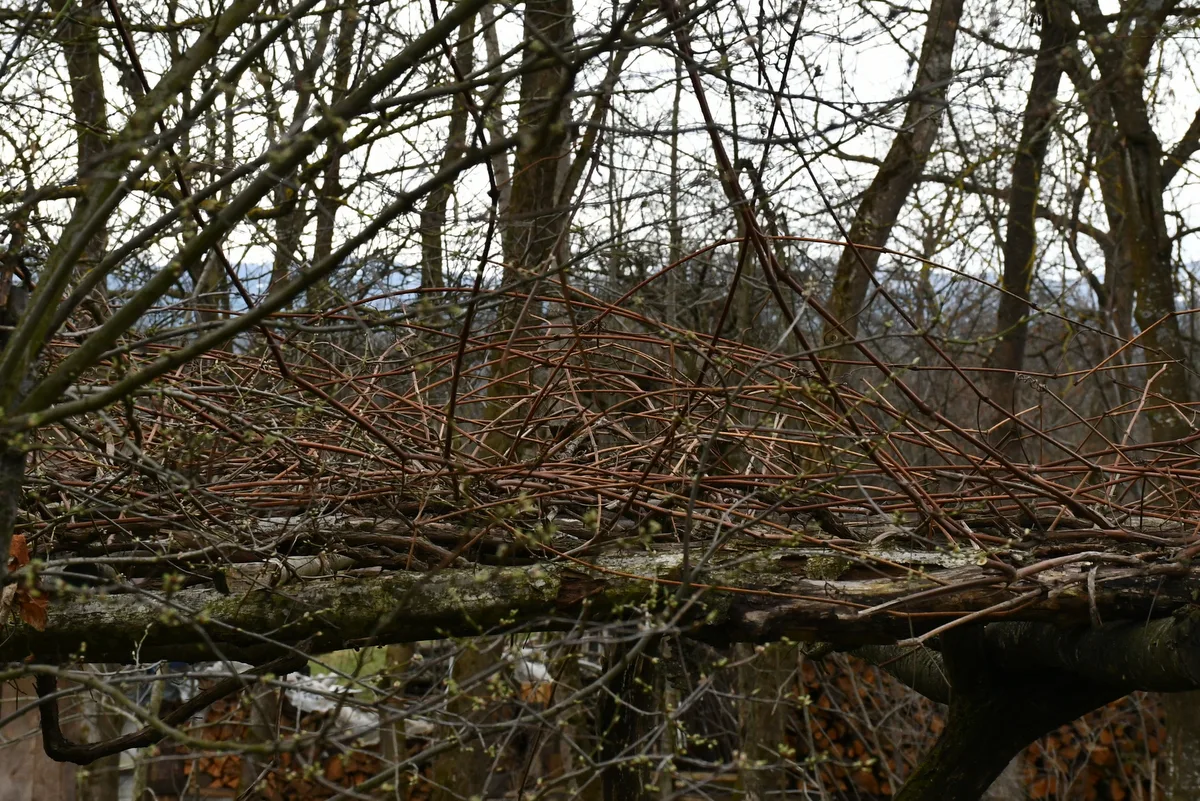
From late February, through the entire month of March, and even into April, is when grapes should be pruned.
Attempt to cut any earlier than this, and a hard frost can cause damage to the buds and canes. Any later and they will weep. If you truly want to understand your grapes, you may be interested in the reasons for grapevines dripping water.
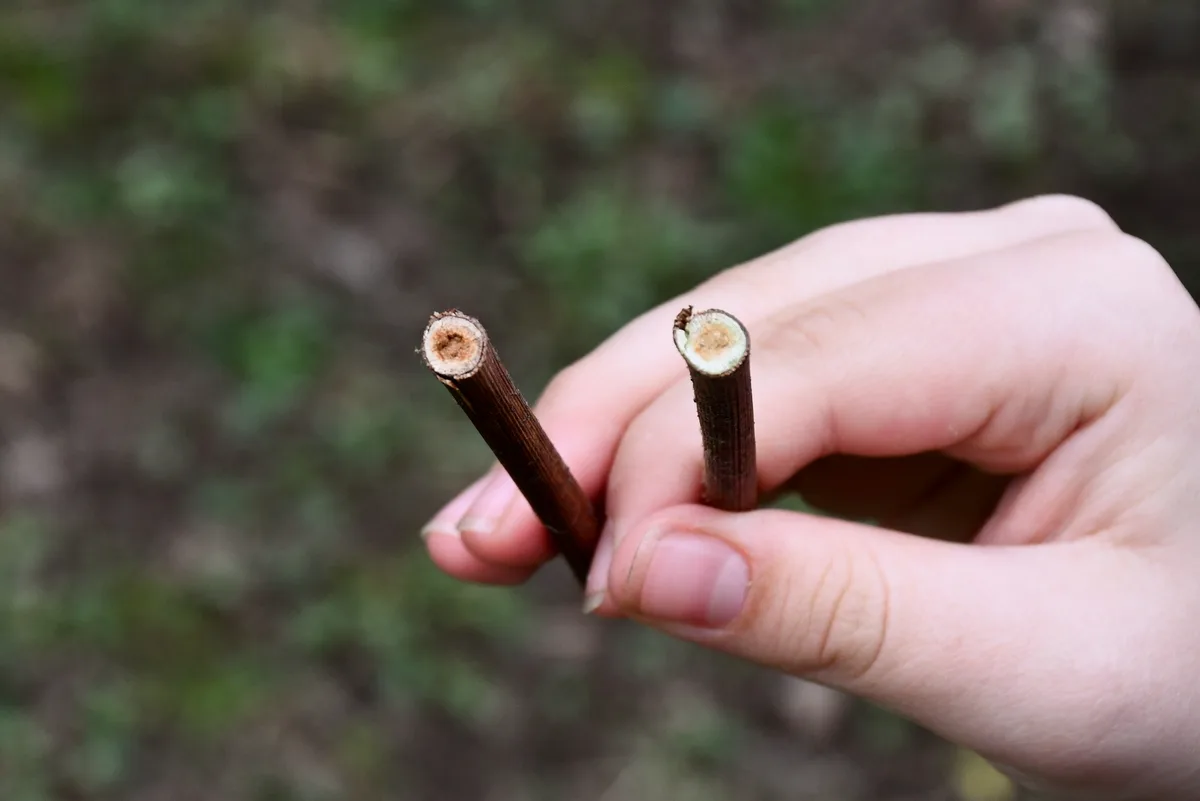
As you already guessed, pruning is the number one spring job for grapevines, but it’s not the only one.
You should also use these spring months to check the health of the trellis or structure the vines are to be climbing on. It’s also a good time to look into new grape varieties that may be better suited to your climate and/or soil type.
In the gardening world, it always pays to be prepared, so take a look at the following spring jobs for grapevines, before it’s too late.
Spring Jobs for Grapevines
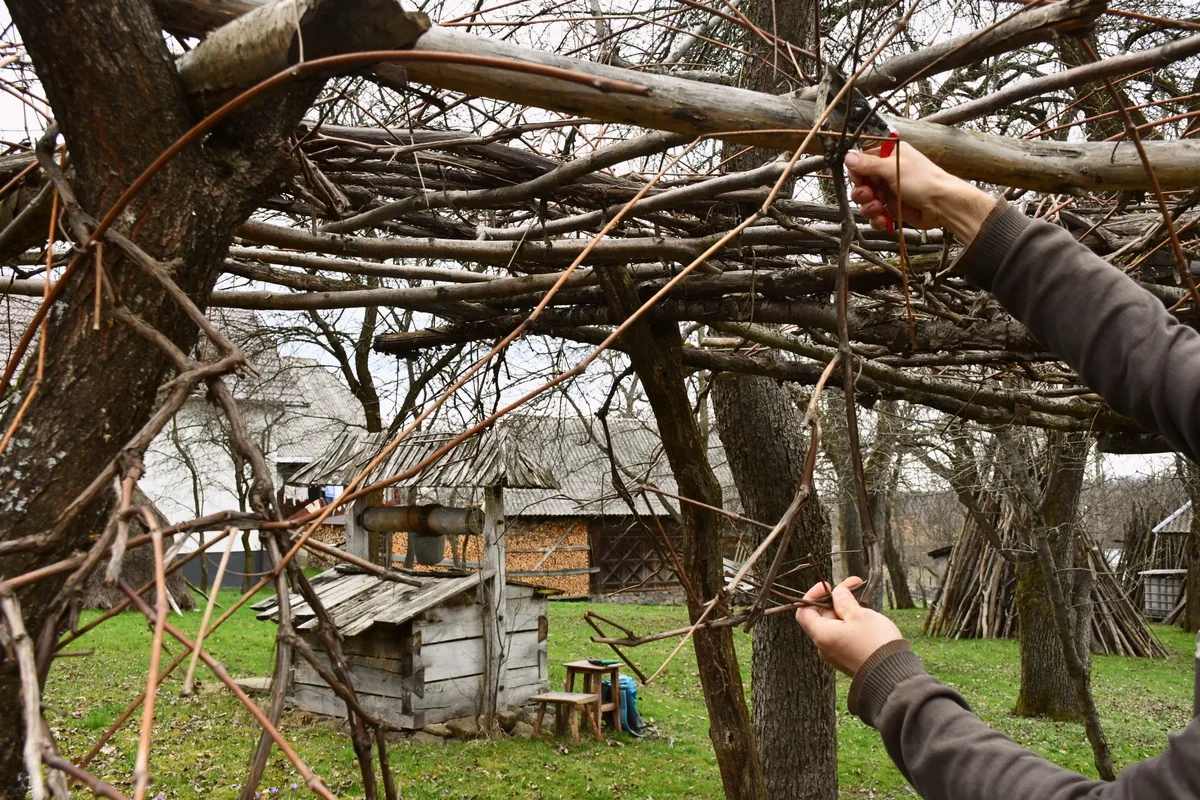
1. Prune Grapevines in Spring
Crossing branches is just one of the problems to correct when it comes to pruning. What you really need to know, is that bunches of grapes only form on new wood.
That’s the main reason grapes should be cut back: to ensure plenty of new growth on each vine. If you want to get technical, cut all fruiting side shoots back to 2 buds. I know it seems harsh, but they’ll like it.
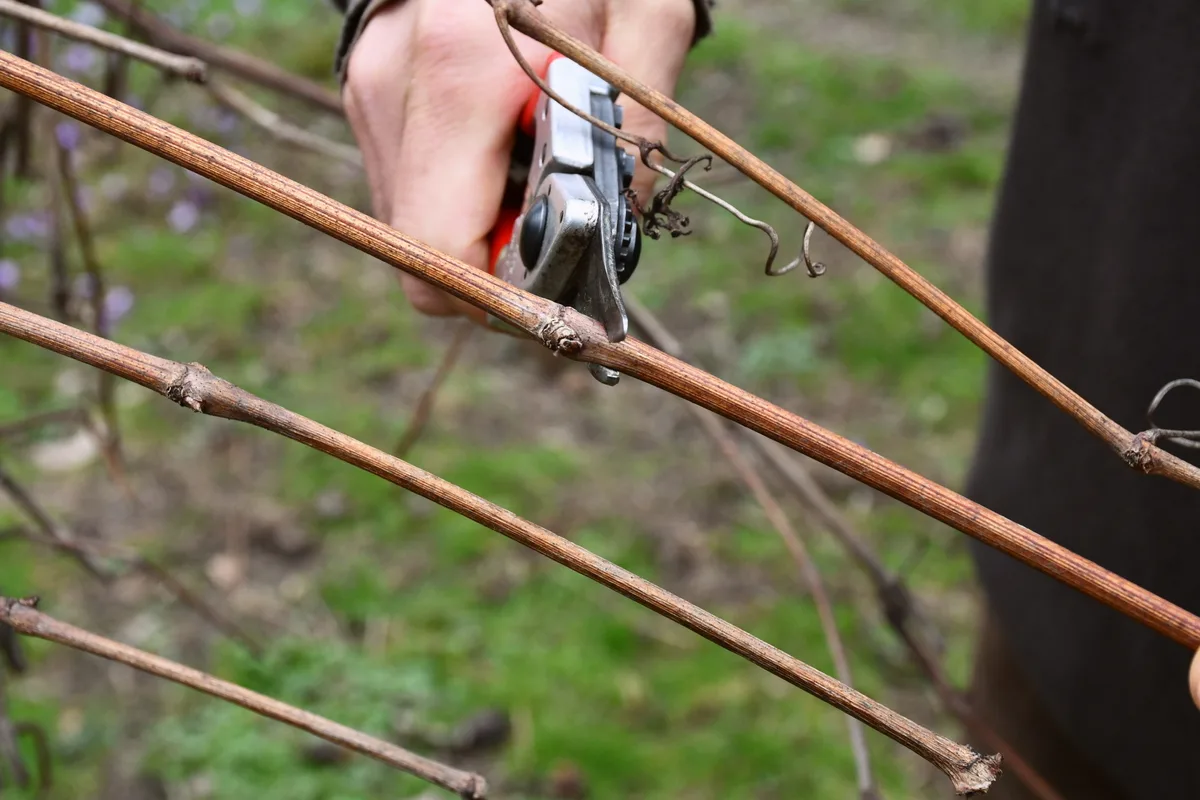
That being said, grapes don’t need to be pruned every year, unless you have an orderly vineyard.
So, if it doesn’t seem like a spring pruning is necessary, you can always save that clipping job for summer. Summer pruning of grapevines ensures that the growing bunches receive proper airflow as the thinning of leaves helps to minimize fungal infections and other diseases.
Plus, if your vines are too heavily laden with fruit, you can snip some bunches off at that time.
Don’t forget to trim back damaged vines.
Back to spring pruning. While you’re pruning for aesthetics, don’t forget your purpose.
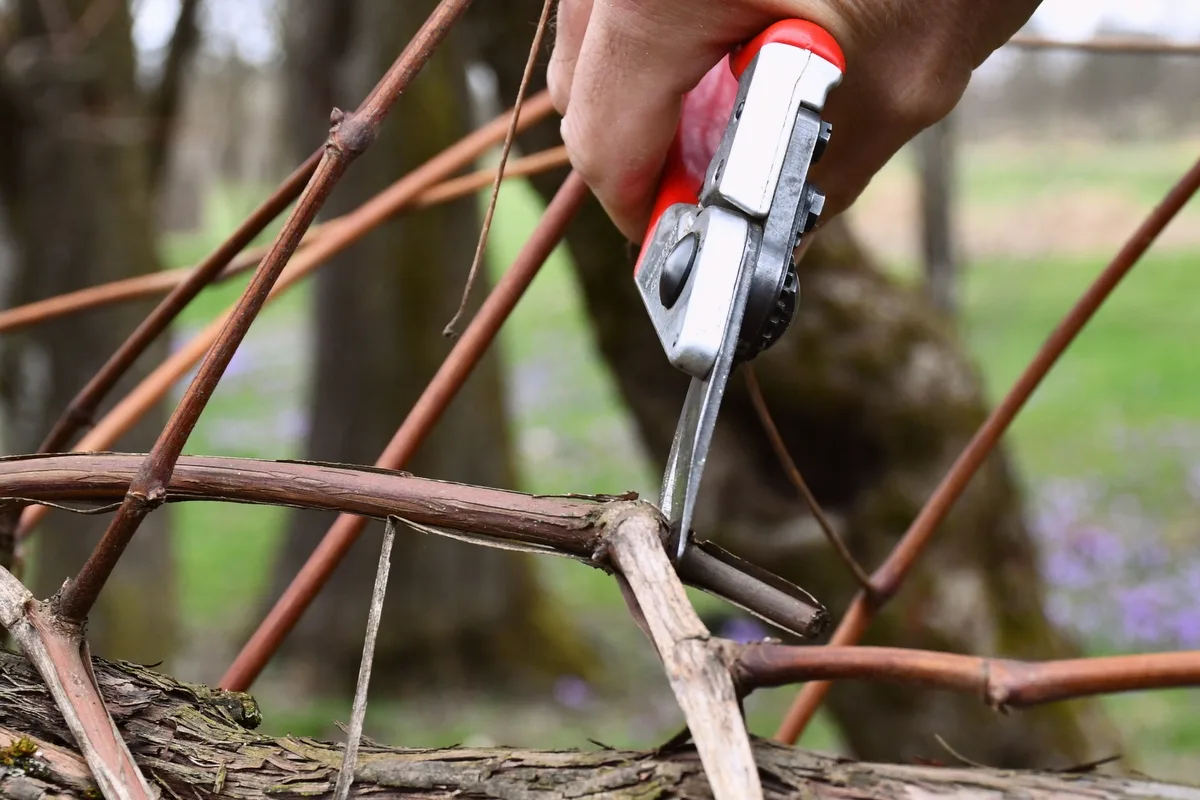
Take into account the health of your grapevines and make sure to remove any dead or damaged wood, from a small tip of a vine all the way back to the mother root.
2. Tie Up Any Loose Ends
While you are up and analyzing the basic structure of the vines, take a few moments to tie up any loose branches. This will help keep any canes and shoots off the ground. It will also stabilize the structure they are growing on.
As with tying up any plant or tree, be sure the ties are kept loose as the cane will continue to grow in girth throughout the season. This way, you won’t have to come back until next season to replace the ties.
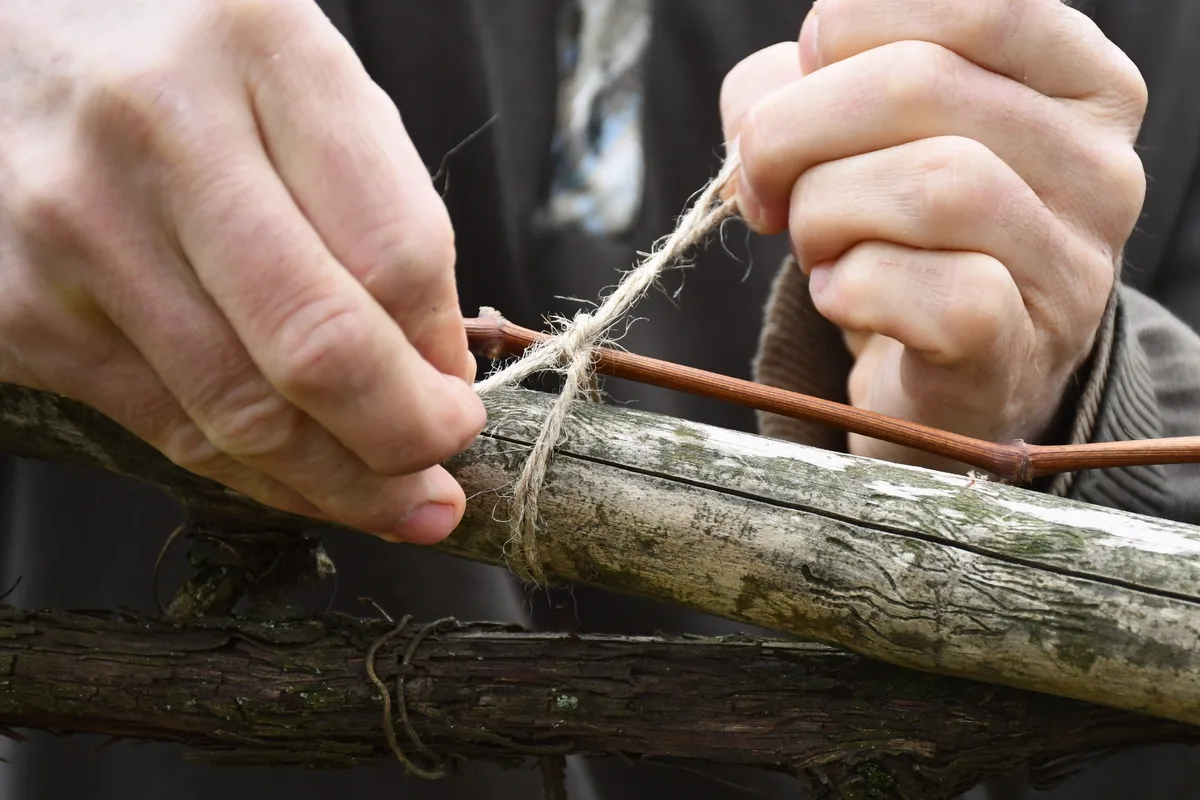
With any climbing plant, be sure to cut back (and pull out) any vines that are reaching too far into neighboring trees. Unless you’d like to leave some bunches for the birds. In that case, leave a few vines unapproachable for human hands.
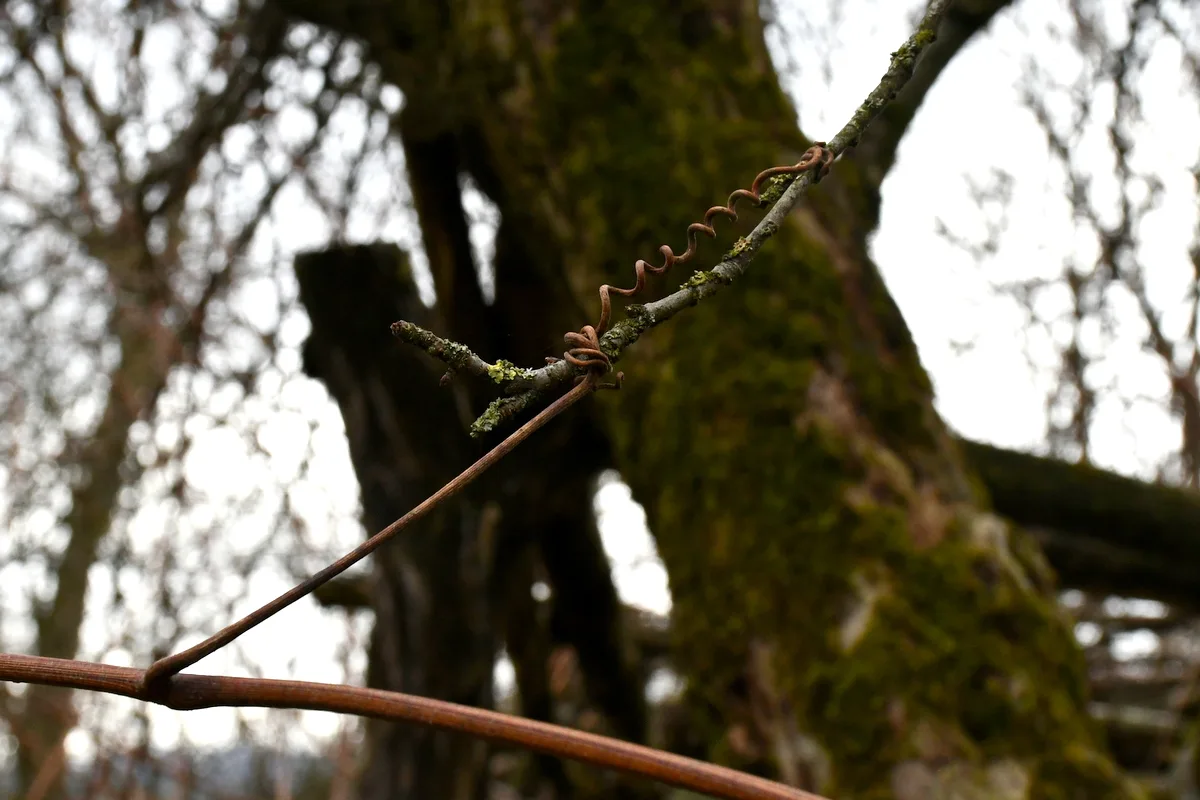
3. Apply Fertilizer and Mulch To Grapevines
Grapevines have very deep roots and for the most part support themselves in getting the nutrients they need from down below.
However, if you notice your harvests declining or lacking in flavor, it never hurts to add a small heap of well-rotted manure around the base of the vines. If you don’t have access to that, garden compost will do just as well. My organic gardening philosophy is to always use what is local first and foremost.
Outside of that, many gardeners recommend using a 10-10-10 fertilizer at the beginning of the season. Apply that in a three-foot swath around the base of the plants.
What’s for sure, is that grapes, like most other plants, need nitrogen for growth. Not totally unrelated is Elizabeth’s article on 40 nitrogen-fixing plants to grow in your garden. If you’ve forgotten every science lesson from school, this will fill in the gaps.
Mulch your grapevines in spring.
Not everybody does mulch, but they should at least consider it. For starters, it usually doesn’t cost anything. Mulch materials can often be found for free:
- leaf mold
- wood chips
- straw
- hay
- grass clippings
- garden compost (gets bonus points for acting as a fertilizer as well)
Plus, you don’t need a lot of it. You only need to put it around the base of the vines, just 2-3″ deep. It will help to increase soil moisture levels, as well as increase the organic matter in the soil.
4. Check Your Grapevine Support System
I’m saying this from experience—check your grapevine support system now, whether it be a trellis with wires, a small arbor, a grand metal structure, or a simple support with wood posts.
Let me explain. The grapes in our care took a nasty fall last year during a 20-minute wind storm. The entire trellis broke under their weight of vines and leaves, a few posts rotten to the core. It was only a matter of time, but we should have caught it earlier.
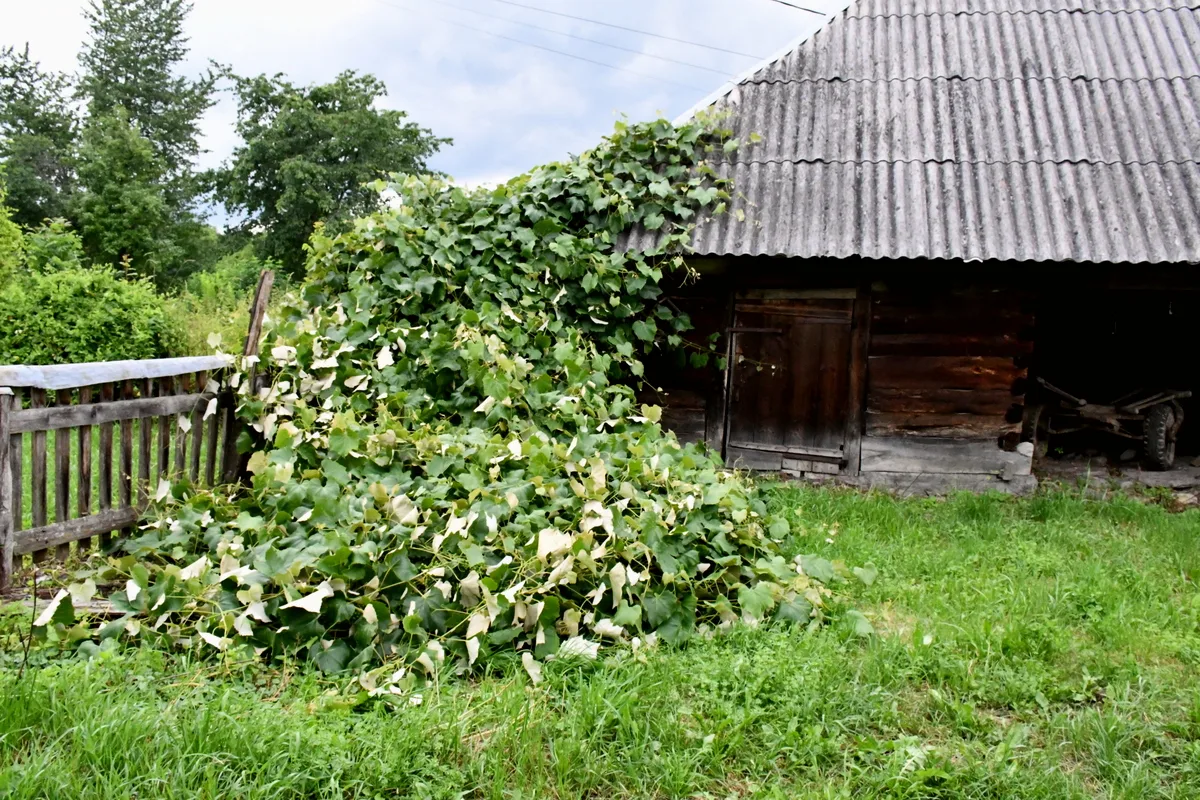
Here’s what it looked like after the storm and after pruning in spring.
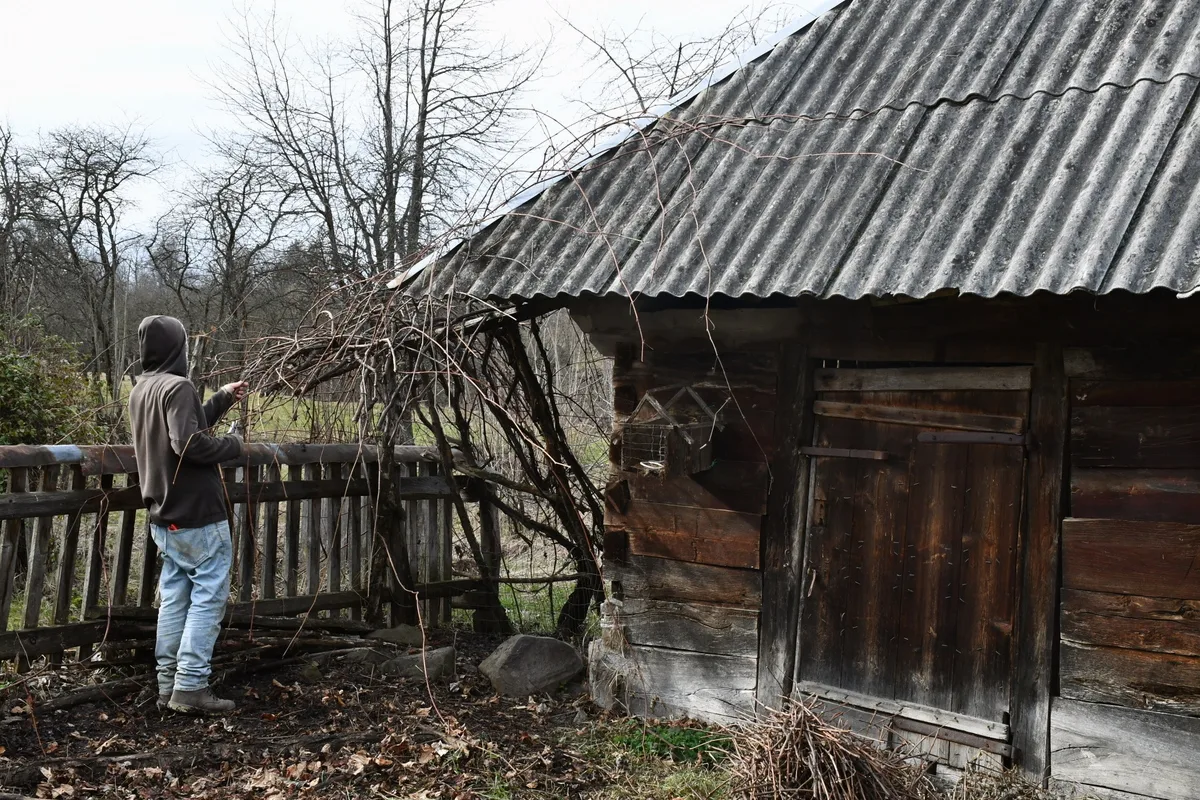
We had to cut them back harder than normal, though I expect they’ll come out of it as vigorous as ever.
5. Review Your Pest Management Strategy
In order to have a successful grape harvest, it pays to be aware of pests before they show up. Knowing what to expect will save you time when it is of the essence.
Before chemicals enter the picture, know that site selection when planting grapes is of the utmost importance.
Organic pest control starts with attracting beneficial insects. You can also employ your chickens, ducks, or guinea fowl to help you out with the dirty work. Don’t fret—growing grapes and taking care of them is easier than growing most other fruits and veggies in your garden. Once you’ve got that down, you’ll be on your way to that well-deserved glass of wine.
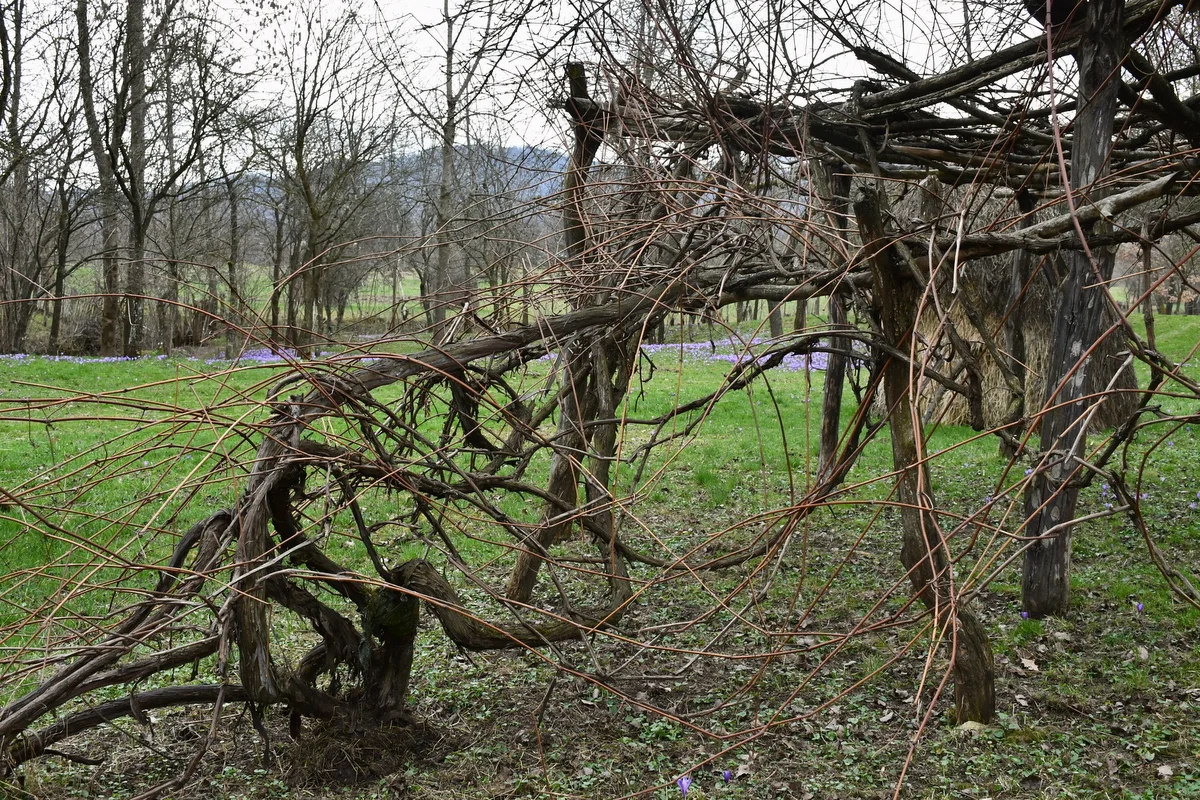
It’s also sage advice to plant disease-resistant cultivars.
If your current grapes are less than ideal, it may be time to rip them out and start over. If so, scroll quickly down to number six to learn about planting new varieties of grapes.
6. Plant New Varieties of Grapes – or More Grapes!
Spring is an ideal time to plant new grapes. Maybe you don’t love the ones you have, or that they have been there long before you arrived. Perhaps you just want another flavor to pop in your mouth.
Whatever the case, make sure to buy 1-year-old bare-root plants from a reputable nursery.
Then, plant them after the last hard freeze. Basically you can put them in the ground so long as the soil is not frozen.
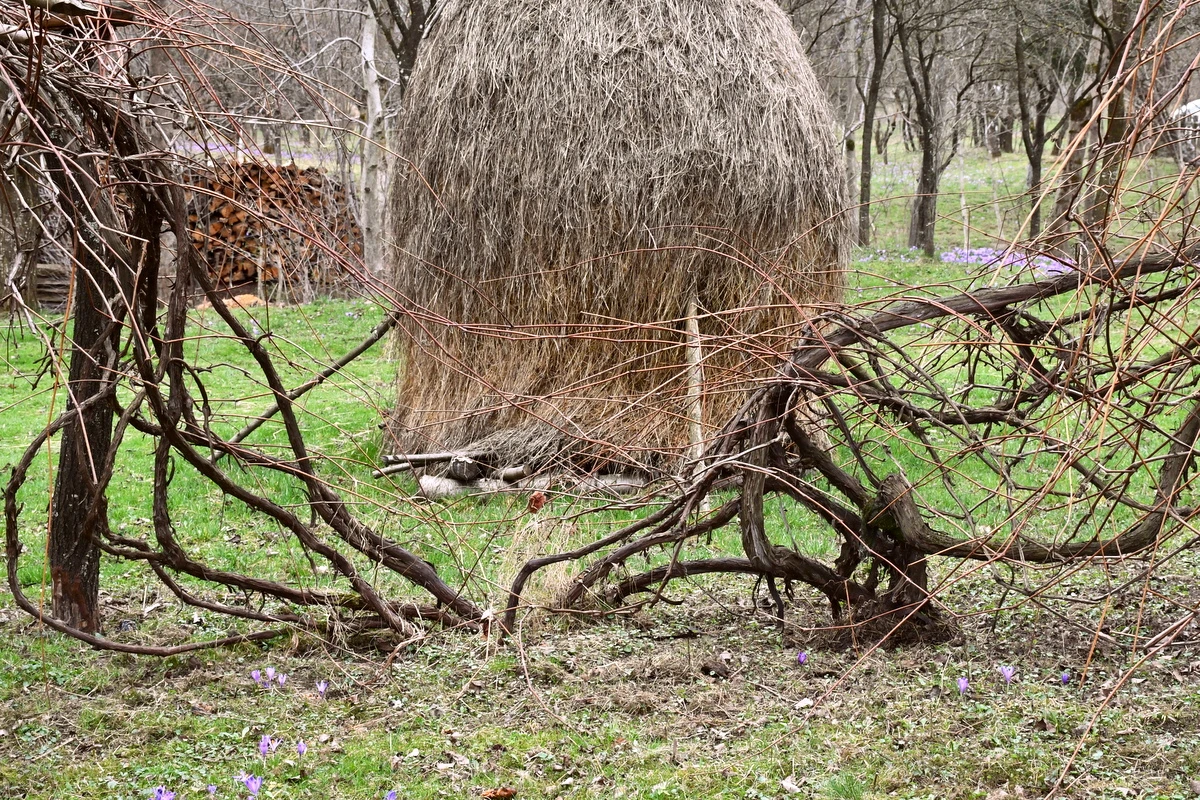
You have three choices for grapes to grow: table grapes, juice grapes, and wine grapes.
Within that, there are seedless and seeded varieties, both wonderful in their own ways.
Before you plant, decide how you will consume the grapes. Concord is the most famous in the juice category, while Thompson Seedless are the crunchy green grapes you know and love from the store. But there are so many varieties in between that need attention, like Scuppernongs. With a name like that, how could you resist planting a new variety in your backyard?
Get to these spring grapevine jobs now, far more garden chores are quickly on the way.
Read Next:

Get the famous Rural Sprout newsletter delivered to your inbox.
Including Sunday musings from our editor, Tracey, as well as “What’s Up Wednesday” our roundup of what’s in season and new article updates and alerts.


